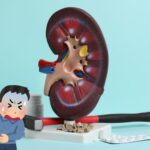Cesarean Delivery (C-Section) in Delhi | All you need to know
Cesarean section delivery, known as C-section surgical procedure is used to deliver a baby through incisions in the mother’s abdomen and uterus. While vaginal method in most cases is preferred best. C-sections is necessary for various medical reasons. In this article, a top gynaecologist in Vikas puri shares insights about C-section delivery, exploring its history, reasons, procedure, recovery, and potential risks.
Reasons for Cesarean Section Delivery
C-sections are recommended for following medical reasons, both planned and emergency. Common indications include:
- Previous C-section: Women who have undergone a C-section in a previous pregnancy opt for C-section.
- Breech presentation: When the baby is positioned feet or buttocks first, then a C-section is recommended to prevent complications during vaginal delivery.
- Multiple pregnancies: Twins, triplets, or higher-order multiples require a C-section to ensure the safe delivery of all babies.
- Placenta previa: When the placenta covers the cervix, a C-section is necessary to avoid severe bleeding during delivery.
- Fetal distress: Signs of fetal distress, such as an abnormal heart rate, may prompt a quick decision for an emergency C-section.
- Maternal medical conditions: Certain maternal conditions, such as heart disease or active genital herpes, may make a C-section the safer delivery option.
C-Section delivery surgery Procedure in Vikas Puri
A Cesarean section surgery for child delivery is performed in an operating room in any hospital or Nursing Home under regional anesthesia, through epidural or spinal block. The following steps outline the standard procedure:
- Incision: A horizontal incision is made just above the pubic hairline (low transverse incision) or a vertical incision from the navel to the pubic hairline (classical incision).
- Abdominal wall and uterus exposure: After the incisions, the abdominal muscles are separated, and the uterus is exposed.
- Amniotic fluid drainage: The amniotic fluid is drained to ease access to the baby.
- Delivery of the baby: The baby is carefully guided out through the incisions.
- Placenta removal: The placenta is then removed, and the incisions are stitched up.
Recovery from a C-section involves a longer hospital stay compared to vaginal birth. Mothers are typically monitored closely for any signs of infection or complications. Pain management is essential during the recovery period, and women are encouraged to gradually resume normal activities based on their comfort levels.
Potential Risks of C-Section
While Cesarean sections are generally safe, like any surgical procedure, they come with potential risks and complications. These may include:
- Infection: Infections at the incision site or in the uterus.
- Blood loss: Excessive bleeding during or after the surgery.
- Blood clots: Formation of blood clots in the legs or lungs.
- Adverse reactions to anesthesia: Allergic reactions or complications related to anesthesia.
- Injury to organs: Accidental injury to nearby organs during the surgery.
- Difficulty with future pregnancies: C-sections may slightly increase the risk of certain complications in subsequent pregnancies.
Cesarean section delivery is a medical intervention that has saved countless lives and improved maternal and neonatal outcomes. While it is essential to recognize its importance in specific situations, efforts to promote vaginal births and reduce unnecessary C-sections continue. Understanding the procedure, recovery process, and potential risks empowers expectant mothers to make informed decisions about their birthing experience in consultation with their healthcare providers. As medical technology advances, the landscape of childbirth will inevitably evolve, but the primary goal remains unchanged: ensuring the health and well-being of both mother and baby.
Consult a best Gynaecology nusring Home in Delhi before going for C-Section delivery













